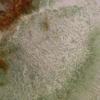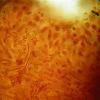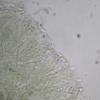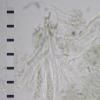
27-11-2025 12:01
Thomas Læssøehttps://svampe.databasen.org/observations/10496727

27-11-2025 11:46
Thomas Læssøehttps://svampe.databasen.org/observations/10493918

17-09-2025 10:50
Heather MerryleesHi there!I am hoping for any advice on the identif

29-11-2025 08:40
 Andreas Millinger
Andreas Millinger
Hello,on a splintered part of a branch on the grou

28-11-2025 16:45
Nogueira HéctorNovember 23, 2025 Requejo de Sanabria (León) SPAI

25-11-2025 14:24
Thomas Læssøehttps://svampe.databasen.org/observations/10490522

27-11-2025 15:41
Thomas LæssøeSpores brownish, typically 4-celled; 26.8 x 2.4;

27-11-2025 11:31
Thomas LæssøeCollectors notes: Immersed ascomata, erumpent thro

23-09-2025 13:31
Thomas Læssøehttps://svampe.databasen.org/observations/10534623

26-11-2025 18:13
The entire run of Mycotaxon is now available throu
Here's already my next problem:
Substrate: (Yet) Unidentified deciduous wood
Macro: Apothecia, up to 0.5 mm diam. (as single apothecia), exceeding 1 mm in confluent parts. Densely aggregated and often more or less coalescing to confluent parts. Black, with a distinct margin when young, then flat without margin and later convex. Exuding as a red-brown colour in KOH.
Micro: The whole disc is incrusted with a brown substance and structures are difficult to see when prepared in water. This Substance dissolves in KOH as a reddish exsudate and then the structures are hyaline to distinctly green. Asci 35-40 x 5 µm, IKI-, Melzer-, Spores hyaline, 4.5-5.5 x 1.2-1.6 µm, with two oildrops, aseptate. Paraphyses about 1 µm diameter. Excipulum not clearly differentiated from medulla, the medulla consisting of gelatinous tissue with loosely intertwined, irregularly expanded hyphae (Photos).
Thank you for any help
Stefan

Ist was Durelloides.

danke, das hilft! Vergleiche mal meine Zeichnungen im Verzeichnis Phaeangella = Durella redbrown, und da "bigutt spores narrow ionom". Da sind zwei Funde, einer aus USA, der andere aus Luxemburg. Die wuchsen aber an ansitzenden Ästen.
Hast du keine Skala in deinen Fotos? Dann könnte ich etwas nachmessen.
Das Auflösen und Austreten des rotbraunen Pigments ist typisch für diese Art (ionomidotisch). Irgendwie erinnert er auch an Ionomitodis fulvotingens, aber nur mikroskopisch inklusive Excipulum.
Grüße
Zotto

Asci tot 45 x 4.5-5.5 µm,
Sporen etwa 4,5-5,5 x 1,8-2 µm







